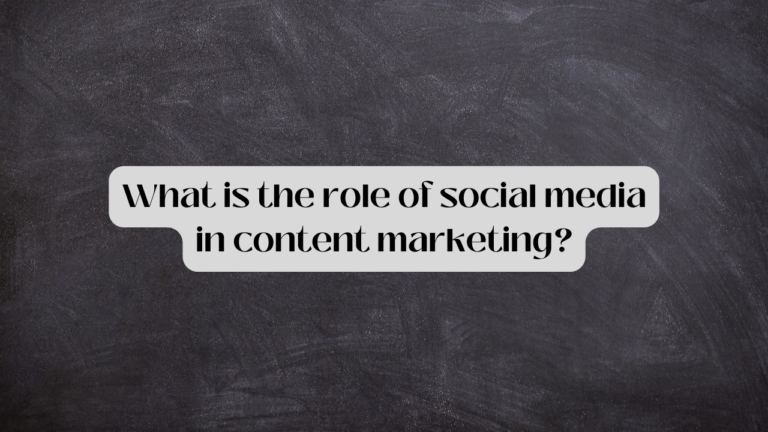What Are Some Effective Content Marketing Strategies?
In an increasingly digital world, content marketing has emerged as a pivotal strategy for businesses and organizations to connect with their target audience. The power of content lies not only in its ability to inform but also to engage, inspire, and establish credibility. For researchers seeking to harness the potential of content marketing, understanding and implementing effective strategies can significantly enhance their visibility and impact. In this comprehensive guide, we delve into the core principles and strategies of content marketing, addressing commonly asked questions to equip researchers with the tools they need to excel in this dynamic landscape. GibsonGirlsMarketing has you covered.
Hook: Unleashing the Potential of Content Marketing in Research
Imagine if groundbreaking research remained confined to academic journals, largely inaccessible to the general public. In an era where information flows freely through digital channels, this scenario seems increasingly archaic. Content marketing offers researchers an opportunity to bridge the gap between scholarly work and a wider audience. Through compelling content, researchers can not only share their discoveries but also cultivate a community of engaged individuals who value and contribute to their work.
Understanding Content Marketing: The Basics
Content marketing involves the creation and distribution of valuable, relevant, and consistent content to attract and retain a specific target audience. Unlike traditional advertising, content marketing seeks to educate, entertain, or enlighten the audience, establishing trust and authority in the process. For researchers, content marketing represents a chance to transcend the confines of academia and engage with a broader spectrum of stakeholders.
Key Strategies for Effective Content Marketing
1. Identify Your Audience and Goals
Before embarking on any content marketing endeavor, it’s essential to define your target audience and set clear goals. Are you aiming to educate the general public about your research area or seeking collaboration with fellow experts? Understanding your audience’s preferences, needs, and pain points will inform the type of content you create and the channels through which you distribute it.
2. Craft Compelling and Valuable Content
The cornerstone of successful content marketing is high-quality content. Whether it’s in the form of blog posts, videos, infographics, podcasts, or social media updates, your content should provide value to your audience. Share insights, provide solutions, and spark conversations that resonate with your target audience.
3. Consistency Is Key
Consistency builds familiarity and trust. Establish a content calendar that outlines when and where you’ll publish your content. Whether you opt for a weekly blog post or a monthly video series, maintaining a regular publishing schedule keeps your audience engaged and eager for more.
4. Utilize SEO Best Practices
Search Engine Optimization (SEO) is pivotal in ensuring your content reaches its intended audience. Conduct keyword research to identify relevant terms and phrases related to your research. Integrate these keywords naturally into your content to improve its visibility on search engines.
5. Leverage Social Media
Social media platforms provide an ideal avenue to share your content and interact with your audience directly. Identify the platforms most frequented by your target audience and tailor your content to suit each platform’s unique characteristics.
6. Tell Compelling Stories
Humans are wired to connect through stories. Weave narratives around your research to make it relatable and engaging. Personal anecdotes, case studies, and real-world examples can humanize complex topics and draw your audience in.
7. Engage with Your Audience
Content marketing is a two-way street. Encourage discussions and respond to comments and queries from your audience. This interaction not only fosters a sense of community but also demonstrates your commitment to sharing knowledge.

FAQs: Navigating the Content Marketing Landscape as a Researcher
Q1: How can I measure the effectiveness of my content marketing efforts? A1: Tracking key metrics such as website traffic, social media engagement, time spent on page, and conversion rates can provide insights into the impact of your content. Tools like Google Analytics and social media analytics platforms can assist in measuring these metrics.
Q2: What is the ideal length for written content? A2: The length of your content depends on its purpose and platform. Blog posts typically range from 1,500 to 2,500 words, allowing for in-depth exploration. However, social media posts might be much shorter to cater to shorter attention spans.
Q3: How can I come up with fresh content ideas consistently? A3: Engage with your target audience to understand their questions, concerns, and interests. Additionally, follow industry trends and engage in ongoing research to stay up-to-date with relevant topics.
Q4: Can I repurpose my research papers into content marketing materials? A4: Absolutely. Research papers can serve as a foundation for various types of content. Break down complex concepts into more accessible formats, such as blog posts, infographics, or videos, to reach a wider audience.
Q5: How can I balance my time between research and content creation? A5: Time management is crucial. Allocate specific time slots for content creation and stick to them. Consider collaborating with content creators or outsourcing certain tasks to maintain a balance.
Conclusion: Empowering Researchers Through Content Marketing
In a world inundated with information, content marketing offers researchers a potent means of reaching and engaging their audience. By tailoring content to the preferences of their target demographic, leveraging SEO strategies, and maintaining a consistent presence on digital platforms, researchers can extend their impact far beyond the walls of academia. Through effective content marketing, researchers have the opportunity to not only share their findings but also shape conversations, inspire change, and contribute to a more informed society.




